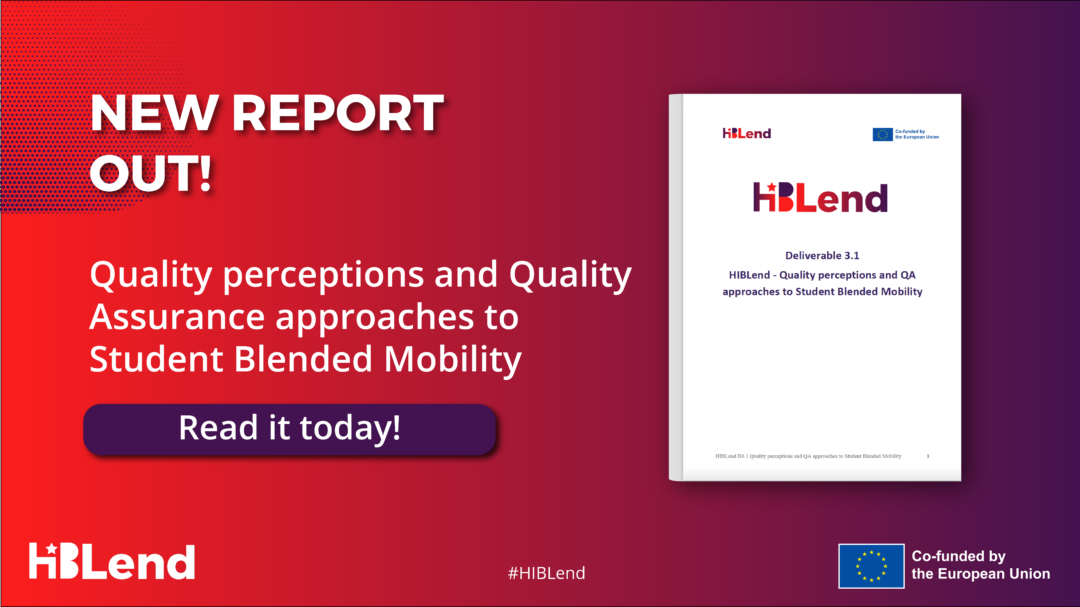Student Blended Mobility (SBM) is becoming an increasingly popular approach in higher education, combining online and physical mobility to foster inclusivity, innovation, and international collaboration. However, as highlighted by recent findings from mini-Delphi sessions conducted by the HIBLend project partners, several challenges need to be addressed for SBM to reach its full potential. This article explores the key findings, conclusions, and actionable recommendations to ensure SBM’s long-term success.
Main Findings
SBM offers students international learning opportunities, enhancing innovation and inclusivity. Yet, it faces several obstacles: administrative burdens, gaps in funding for online components, short programme durations, inconsistent recognition in curricula, and insufficient staff training. Additionally, SBM frameworks are often underdeveloped, with limited staff expertise in digital and intercultural skills. Students report that online components are less engaging than in-person mobility, and the inclusion of domestic students in Blended Intensive Programmes (BIPs) remains challenging due to funding and logistical restrictions.
Quality Assurance (QA) systems for SBM are still evolving, mainly relying on frameworks designed for physical mobility. Feedback mechanisms are informal, and QA agencies often lack experience with SBM-specific needs, leading to quality gaps. To address these challenges, SBM’s success hinges on consistent financial support for educators, integration into institutional internationalisation strategies, improved communication, and enhanced collaboration.
Conclusions
Current Erasmus+ monitoring practices focus mainly on numerical reporting, limiting insight into SBM’s quality and outcomes. To improve this, monitoring should capture more in-depth information about SBM’s implementation and progress. Aligning SBM with the European Standards and Guidelines (ESG) provides a strong foundation for addressing QA challenges. This is particularly important in areas such as curriculum design, assessment, and faculty training, which are essential for delivering an effective blended learning experience.
Institutions should integrate SBM into existing internal QA mechanisms through flexible audits, ensuring that online and physical components are cohesive. Finally, quality assurance agencies should adopt enhancement-led approaches that focus on continuous improvement, offering voluntary quality labels and workshops to align internal and external QA systems.
Recommendations
- For university management and administrative staff, SBM should be recognised as strategically important for internationalisation and inclusion. Clear frameworks for cooperation, credit recognition, and administrative processes are essential. Institutions should invest in infrastructure and staff training to support SBM’s growth, and develop systems to track participation and outcomes.
- Academics involved in SBM should develop clear learning outcomes for both online and physical components, integrating them seamlessly. Innovative teaching methods and effective assessment rubrics should be employed, with regular feedback to improve SBM offerings.
- Funding organisations should simplify the Erasmus+ application process and incorporate equity metrics to ensure inclusivity in SBM design.
- QA agencies must adapt frameworks to address SBM’s unique needs, promoting integration with institutional QA systems and internationalisation policies.
SBM has the potential to reshape the mobility landscape in higher education, but overcoming existing challenges requires a collaborative, strategic approach. By addressing issues related to administration, staff training, and quality assurance, SBM can offer a more inclusive, engaging, and high-quality learning experience for students across Europe.
To learn more about the detailed findings and recommendations, download the full report.
Did you know that we have created a LinkedIn community for practitioners dedicated to advancing student blended mobility? Join the group today to connect, share knowledge, and collaborate with peers working towards improvement and innovation in the field!

